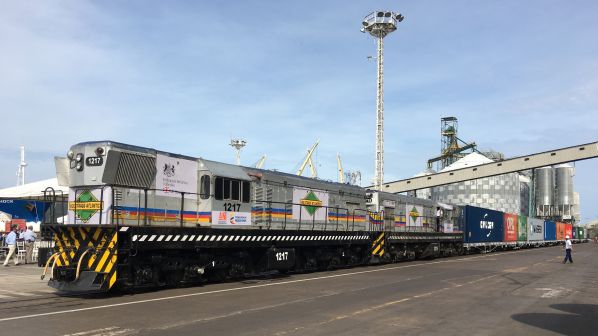Under the plans, freight trains will use the 914mm-gauge 767km line between Chiriguana and La Dorada to help connect the Caribbean port of Santa Marta with the major inland cities of Bogota and Medellin with road envisaged to provide last mile connectivity from La Dorada. The cities and the corridor served by the railway collectively account for 90% of Colombia’s GDP.
Holdtrade Atlántico has developed the plans in conjunction with US freight railway Iowa Pacific, which is a minority shareholder, and has received assistance from the British government and the British Embassy in Bogota since 2013.
The Chiriguana - La Dorada line has been rebuilt by infrastructure manager ANI in the last six years following a $US 120m investment by the national government. Work focused on repairing El-Nino related weather damage at around 70 locations along the line, which benefitted from the installation of concrete sleepers and welded-rail in 2005.
Holdtrade Atlántico has secured train paths and access rights until 2029 from Fenoco and ANI and initially plans to operate two to three trains a week which could increase to up to 10 trains every two weeks.
The operator has already invested over $US 5m and is currently raising the finance necessary to commence operation with a further $US 101m required to fund capital costs and operational start-up.
Holdtrade Atlántico has developed its business plan for the first seven years of planned activities. It envisages revenue growing progressively from $US 10m in 2020 to over $US 145m by 2026. The company expects to achieve gross profit margins in the range of 39-50%.
The overall service plan is described as ‘Dock-to-Door’ and initially services will focus on the route from Santa Marta to Bogota/Medellin. Later phases will include links to Colombia’s other major ports such as Cartagena and Barranquilla using inland waterway connections to a terminal at Gamarra, located approximately halfway between Santa Marta and La Dorada.
Competitive
Road traffic speeds are low in Colombia meaning the railway is competitive even when taking into account the transfers to road. Road transport freight rates are also high compared with other similar countries and Holdtrade Atlántico believe this will enable rail freight rates to be set at a point where all traffic carried is profitable. The pre-sale of 50% of the capacity of the planned operation to OPL Carga, which transports 4 million tonnes of freight annually, also offers financial stability during the start-up phase.
The operator will use a fleet of rebuilt EMD diesel GT22 locomotives, which were manufactured for use in Queensland, Australia, plus a mix of flat and open gondola wagons, obtained from South African rail engineering firm Genrail. The rolling stock will be shipped to Colombia later this year. Two locomotives and 51 wagons will be used initially rising to 13 locomotives and more than 600 wagons by 2026.
Holdtrade Atlantico’s technical advisor for the project is Transport Investment (TIL) with London-based fintech company Envestors managing the planned fundraising. Assuming successful completion of the financing effort later this year, operation is due to begin in early 2020.

